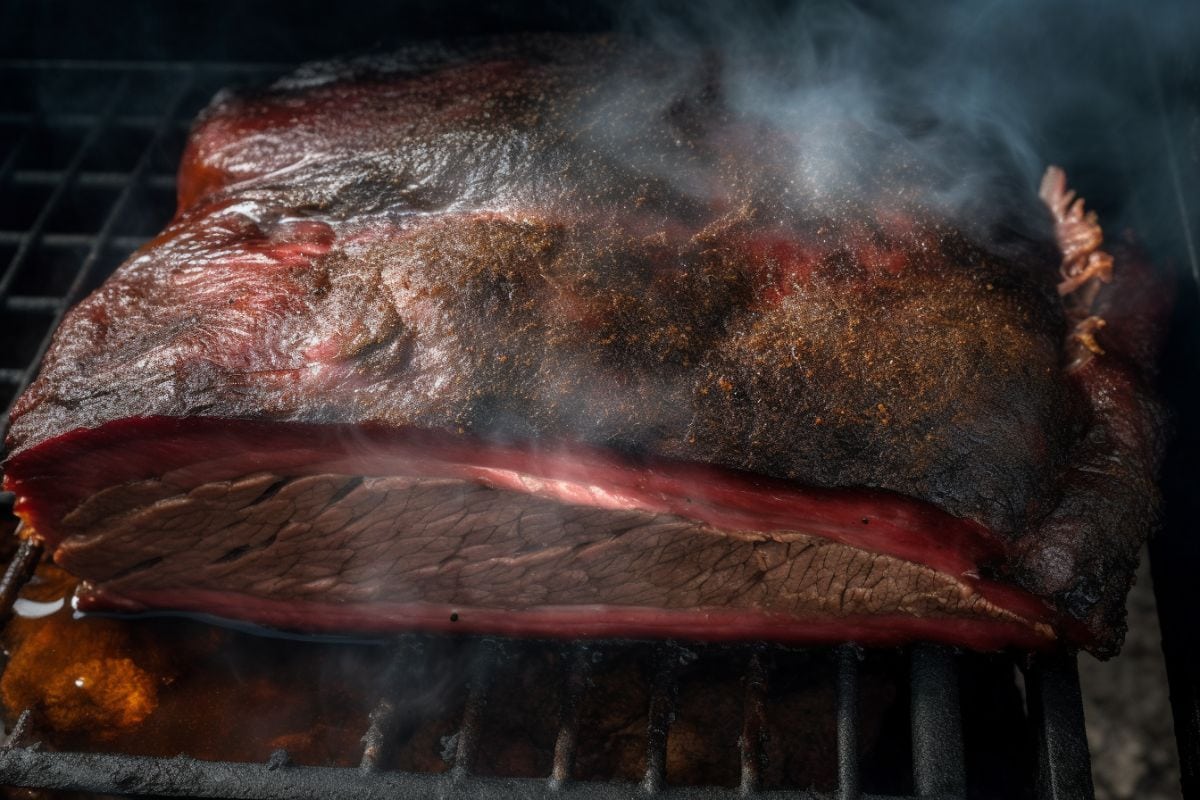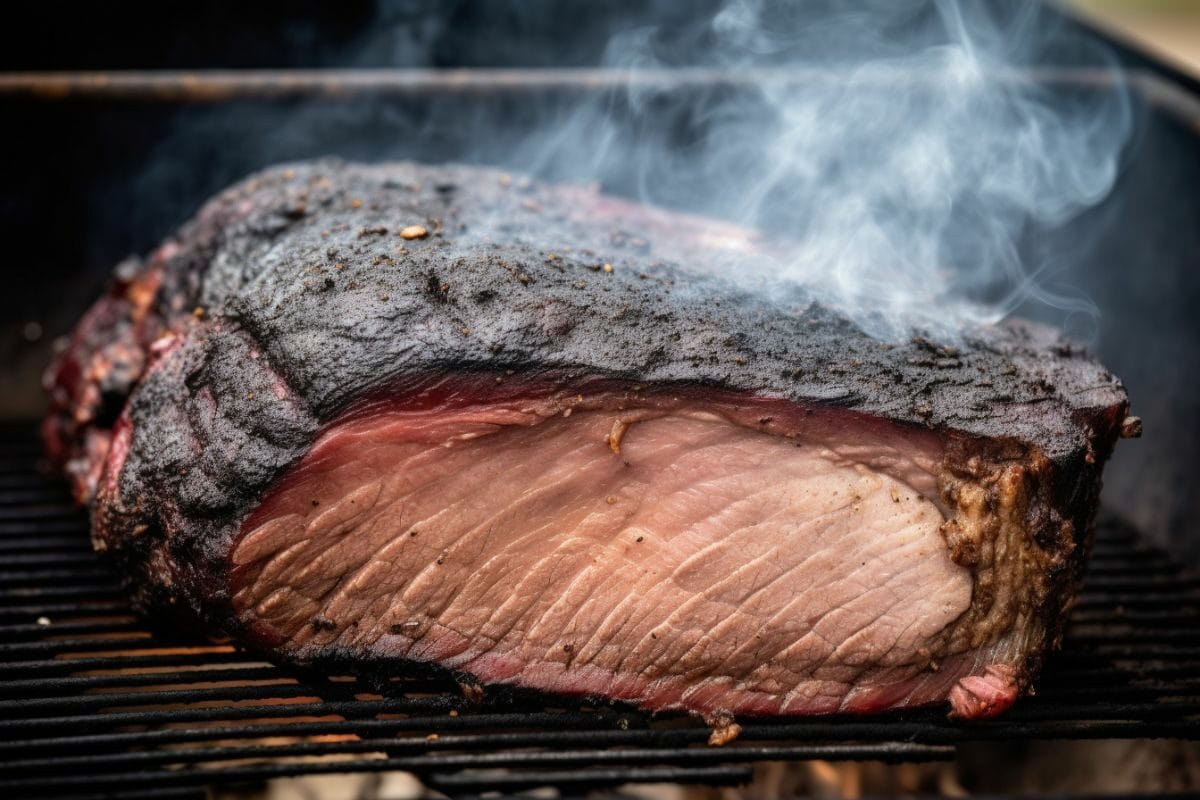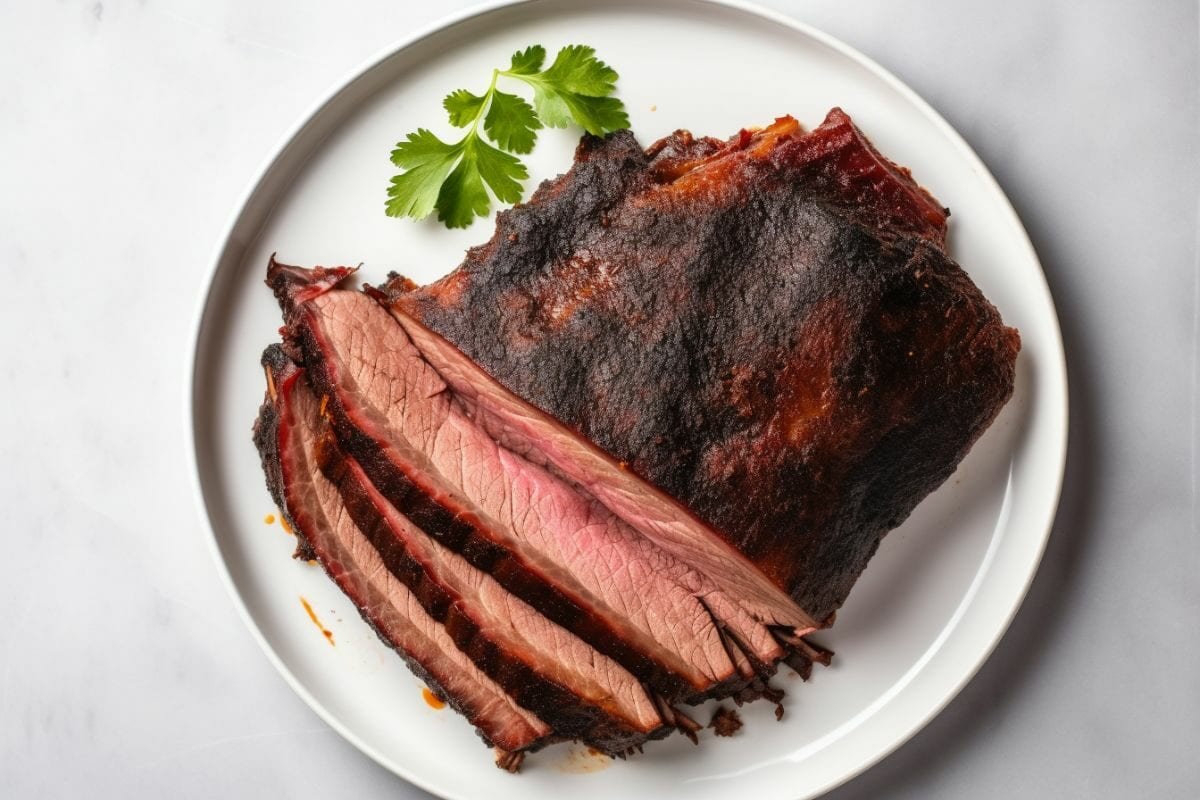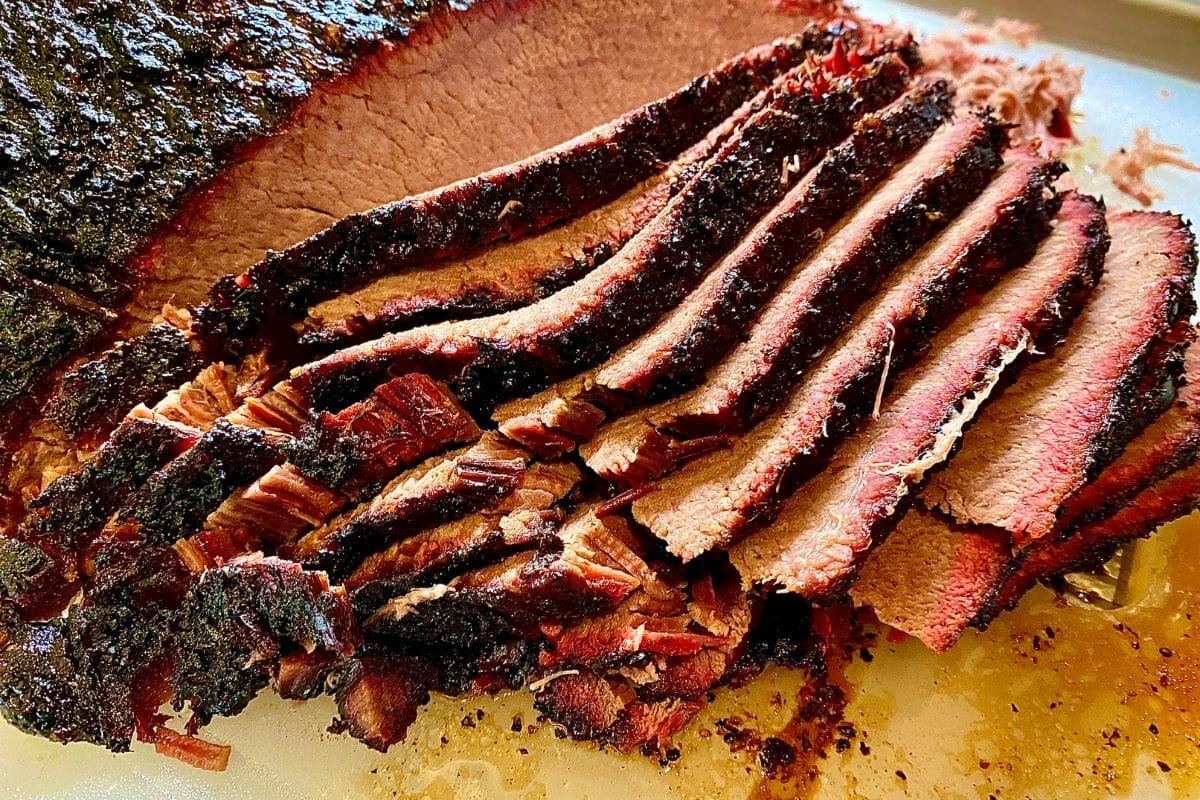Brisket is the most difficult, fickle meat to smoke on Planet BBQ, so I usually smoke it at 225°F to give myself the best chance for success. You can smoke brisket at 250°F and turn out some great-tasting beef, but it’s more difficult.
I’ve been smoking brisket for years. I’ve tinkered with smoking brisket at various temperatures, so I’ve got the skinny on what you’ll need to adjust when you’re smoking at either 225°F or 250°F. I’ve got many, many cooks under my belt (and more than a few slices of brisket, too).
I’m here to fill you in on the difference between smoking brisket at 225°F vs. 250°F and to provide insight into what impact cooking at different temperatures has. Let’s take a look!

Yes, there are a few differences when you smoke brisket at different temperatures.
A beef brisket will cook faster at 250°F than at 225°F. It shaves about 15 minutes off your cook per pound of brisket. So a 12-pound brisket will be done 3 hours sooner if you cook it at 250°F vs. 225°F.
225°F has been the gold standard temperature for smoking brisket since dinosaurs roamed the earth. It turns out reliably juicy, tender, beefy brisket. Most pitmasters (including me) would advise you to cook brisket at 225°F. It maximizes the odds that you end up with a deliciously tender ‘que.
If you bump the temperatures to 250°F, you are at greater risk of making a brisket that’s tough and dry. Don’t worry, I’ve got some suggestions coming for nailing your cook if you decide to smoke at 250°F.
Figure cooking for an hour per pound when you’re smoking at 225°F. I’ll level with you. Cooking times can vary significantly based on the moisture and fat content of the brisket, your smoker, the accuracy of your dome thermometer, and other factors.
So if you’re wondering how long it takes to smoke a 6-pound brisket at 225°F, figure at least 6 hours.
Use these times as a rough estimate, and remember that in BBQ, we generally cook to temp, not time. Check the internal temperature of the brisket. When it reaches 190°F to 210°F (203°F is my sweet spot), it’s time to take it off the heat.
When you slide your probe into the brisket, you should feel almost no resistance. It should feel like a knife gliding through warm butter.
If you decide to smoke your brisket at 250°F, figure 45 minutes a pound.
So if you’re cooking a 16-pound brisket at 250°F, plan on running your smoker for 11 hours.
Once again, use these times as a rough guide. The internal temperature is a more reliable indicator of doneness than time.
Related Reading

If this is your first time smoking brisket, I think you should smoke it at 225°F for your first cook (and a few more after that, too). There’s a reason most backyard pitmasters cook brisket at 225°F – we are minimizing things that can go wrong. 225°F is the most fool-proof way to make really great BBQ brisket.
If you are smoking part of a brisket, either the flat or the point, do it at 225°F. The flat is less richly marbled, so it needs all the help it can get. And since these cuts are smaller, they don’t take half a day to make. Might as well give them as much time on the smoker as possible.
If your brisket is USDA Select or Choice, I’d recommend cooking it at 225°F. These cuts have less marbling, which means they aren’t as juicy or tender as pricier cuts.
Higher temperatures like 250°F are more suitable when you’ve got a better grade of brisket. Prime is the best grade the USDA has, followed by Choice, then Select. Around 2% of the beef produced in the U.S. gets labeled as Prime.
Wagyu is another excellent grade of beef known for its exceptional intramuscular fat, and it’s becoming more widely available.
If you’re determined to smoke a brisket at 250°F, make sure you get Prime or Wagyu – Select definitely won’t cut it, and even Choice gets hit or miss at the higher temperature.
If you’re doing a full-packer brisket, and it’s USDA Prime or Waygu, you can bump the temp up. A full brisket can withstand the higher cooking temperature without drying out, and it’ll shave several hours off your already long day of smoking.
Want to make sure that you get a brisket smoked to perfection even at a higher temp? Here are the main guidelines to follow:
I always brine my brisket when smoking, but it is especially important when cooking at higher temperatures.
Brining a brisket isn’t just about adding flavor, it also increases meats’ juiciness and tenderness.
Here’s how to dry brine a brisket: sprinkle kosher salt over the entire cut. ½ teaspoon per pound if you’re using Kosher salt, ¼ teaspoon if you’re using table salt. Stick the beef in the refrigerator for 2 to 24 hours, until you’re ready to cook it.
During this time, the salt dissolves into the brisket. The salt will help the brisket retain more water than a brisket that’s not brined. More water retention means juicier meat.
A lot of modern smokers are already equipped with dome thermometers, but I don’t trust them. I own a grill that has a dome thermometer that is wildly inaccurate – as much as 75°.
I ditch the dome thermometer when I’m cooking low and slow, and use a high-end thermometer. Thermoworks makes some great ones that let you track the cooker temperature at the grill grates, as well as your food temperatures.
When you elevate your thermometer, you can guarantee that your brisket really is cooking at 250°F.

A good meat thermometer is a pitmaster’s best friend. Use one that can stay inserted in the brisket while it’s on the smoker, like the Thermoworks Smoke X (linked above). You’ll know the exact temperature of your brisket as it cooks in real time. So you can gauge the exact rate at which the food is cooking.
In turn, you will know exactly when to wrap the brisket. You’ll also know when it’s done cooking.
As you are probably aware, when you cook larger cuts of meat like brisket, the meat hits a stall. When brisket stalls, it stops rising in temperature. The stall can last from 2 to 5 agonizing hours. The stall can give new BBQ enthusiasts fits and grizzled old pros even more gray hair.
To overcome this stall, wrap the brisket in aluminum foil or butcher paper. This is typically done at temperatures between 150°F and 170°F – whenever the temperature of the meat stops climbing.
Since you are smoking at a higher temp, it is a good idea to wrap the brisket as soon as it stalls. A tightly wrapped brisket will become supremely tender, thanks to the moist cooking environment you create when you wrap it.
Remember, your brisket is going to be cooking at a faster rate when smoking at 250°F. As the brisket nears an internal temperature of 195°F or 200°F, it’s time to set up shop near the smoker.
Keep a close watch on the brisket during its final stages. Take it out at the ideal temperature (203°F, give or take) which will help prevent it from drying out.
One of the keys to the juiciest brisket on the block is to let it rest after cooking – anywhere from 2- 4 hours does the trick.
Here’s how I rest my brisket once it’s done on the smoker: if it’s not wrapped in foil or butcher paper, I wrap it up tightly. Then, I wrap that in a clean old towel and stick that whole thing in a cooler. As long as your cooler is decent, the brisket will stay hot for hours.
You can pre-heat the cooler with some hot water before you stick the meat in there if you’d like. Simply pour in some hot water, close the lid, let the cooler sit for 5 to 10 minutes, then drain it.
As the meat rests, the collagens continue to melt. This results in brisket that’s juicier and more tender.
I rest both full-packer briskets and smaller briskets for at least 2 hours.

Now you know what to expect when smoking brisket at 225°F and 250°F. If you’re cooking at 250°F, make sure you grab a Prime or Waygu brisket. They’re rich in fat and can withstand higher temperatures.
But if it’s your first brisket, I’d encourage you to hone your skills at 225°F first. Brisket is a tricky slab of beef that can give seasoned pitmasters fits. Smoking at 225°F is the tried and true method for success.
Cook your brisket to 203°F, or a probe slides right in there, then rest it for 2-4 hours, and you’ll have a piece of beef that the whole neighborhood will be talking about. Happy smoking!